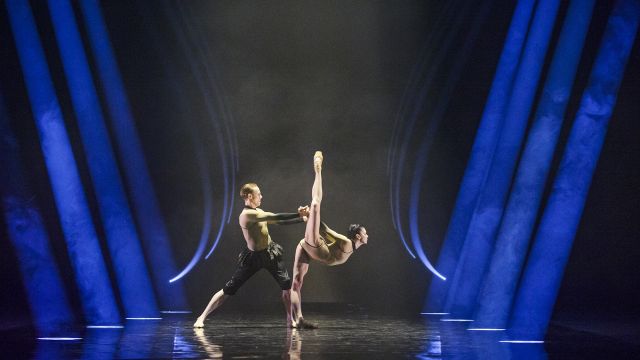Woolf Works
QPAC’s 2017 International Series sees the return of London’s famed Royal Ballet performing two of their signature modern ballets for the first time outside of the Royal Opera House.
The first in the series is Wayne McGregor’s triptych Woolf Works inspired by three of Virginia Woolf’s landmark novels; Mrs Dalloway, Orlando and The Waves. Although they are story ballets in part, they are not linear. McGregor’s choice to bring the language of dance to her writings in contemporary classical form works perfectly for Woolf’s stream-of-conscious narrative, especially I Now, I Then the first of the three ballets which is based on her 1925 novel Mrs Dalloway.
The work opens with a rare and only known recording of Woolf’s voice reading from her essay On Craftsmanship in 1937 as a plethora of handwritten words hurtle across a scrim. Alessandra Ferri, who originally created the role in 2015, exquisitely dances the protagonist bringing emotional dimension to the part as her memory of past and present entwine. Beatriz Stix-Brunell as the young Dalloway mirrors her elder with charming and limpid grace whilst Francesca Hayward as her fleeting amour Sally is simply wonderful. Their brief, and life-changing, kiss is expertly and memorably choreographed by McGregor. It’s a highlight. As is Edward Watson’s vividly raw portrayal of the shell-shocked soldier Septimus Warren Smith and the loss of his dead soldier friend Evans (Tristan Dyer).

Max Richter’s moody but expressive score illuminates the sequences brilliantly.
Part 2, Becomings, is more problematical, being based on Woolf’s feminist classic Orlando, a time-travel biography about a poet which spans periods from the Elizabethan era to the 20th century and in its course changes the gender of the character to female. The staging is striking, abundant with laser beams and dry-ice effects, with a thumping electronic score that felt like it might break out into rock at any time, and unflattering costumes that vaguely evoked the periods with a ruffle here and a part-tutu there. Woolf’s satiric intent was lost in a piece that clearly took form over content. Its only saving grace was a breathtaking pas de deux for Natalie Osipova and Watson.
The last of the works was Tuesday, a short balletbased on Woolf’s The Waves (1931). It opened with Woolf’s suicide note to her husband before she drowned herself in the river Ouse, read by Gillian Anderson against a slow-motion vision of waves breaking near shore. Images of childhood, games with ropes, voices from the past, co-mingled with sounds of the sea, as wave after wave of dancers played out the passing of time and of life. Finally Ferri (as Woolf) is laid to rest by Federico Bonelli as the dancers receded into blackness. It was effective and emotional.
Lucy Carter’s lighting was a big part of the success of the evening as was the Queensland Symphony Orchestra under the baton of Koen Kessels.
Woolf Works is not a perfect ballet by any means, but it does treat its subject with eloquence and beauty and the company deliver McGregor’s vision with incisive professionalism. It was an auspicious start to the 2017 International Series.
Peter Pinne
Photographer: Tristram Kenton
Subscribe to our E-Newsletter, buy our latest print edition or find a Performing Arts book at Book Nook.

